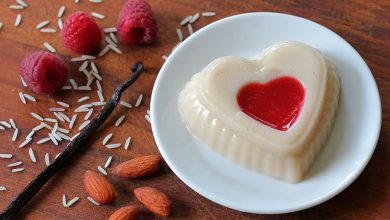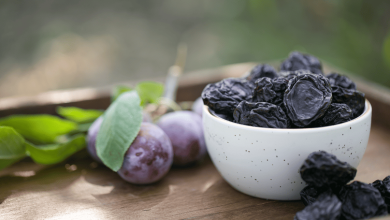Lotus Root (Cooked, Blended, Drained, Without Salt) – Nutritional Information
Lotus root, often regarded as a nutritious and versatile vegetable, is a powerhouse of essential vitamins and minerals while being low in calories and fat. The following table provides a detailed breakdown of its nutritional profile based on a standard serving of cooked and drained lotus root, without any added salt.
Ingredients Overview:
Lotus root is known for its crisp texture and mild flavor, making it a popular ingredient in Asian cuisines. It is typically cooked by boiling or steaming, which helps retain its nutrients. This root vegetable can be enjoyed in a variety of dishes, such as soups, salads, stir-fries, and even as a snack when prepared in chips or fritters.
Nutritional Information per 100g of Cooked Lotus Root (Blended and Drained, Without Salt)
| Nutrient | Amount |
|---|---|
| Energy | 66.0 kcal |
| Protein | 1.58 g |
| Total Fat | 0.07 g |
| Saturated Fat | 0.021 g |
| Carbohydrates | 16.02 g |
| Fiber | 3.1 g |
| Sugar | 0.5 g |
| Calcium | 26.0 mg |
| Iron | 0.9 mg |
| Magnesium | 22.0 mg |
| Phosphorus | 78.0 mg |
| Potassium | 363.0 mg |
| Sodium | 45.0 mg |
| Zinc | 0.33 mg |
| Copper | 0.217 mcg |
| Manganese | 0.22 mg |
| Selenium | 0.6 mcg |
| Vitamin C | 27.4 mg |
| Thiamin (Vitamin B1) | 0.127 mg |
| Riboflavin (Vitamin B2) | 0.01 mg |
| Niacin (Vitamin B3) | 0.3 mg |
| Vitamin B6 | 0.218 mg |
| Folate | 8.0 mcg |
| Vitamin B12 | 0.0 mcg |
| Vitamin A | 0.0 mcg |
| Vitamin E | 0.01 mg |
| Vitamin D2 | 0.0 mcg |
Allergen Information
Lotus root is naturally free from common allergens such as gluten, dairy, soy, and nuts, making it an excellent choice for people with food sensitivities or allergies. However, as with any food, cross-contamination is possible, particularly in processed products, so always check labels if you are buying packaged versions of lotus root or consuming it in prepared dishes at restaurants.
Dietary Preferences
- Vegan-Friendly: Lotus root contains no animal-derived ingredients, making it a great option for vegan and plant-based diets.
- Gluten-Free: This vegetable is naturally free of gluten, so it is safe for those with celiac disease or a gluten intolerance.
- Low in Fat: With only 0.07 grams of total fat per 100 grams, lotus root is a heart-healthy option for those watching their fat intake.
- Low in Sodium: Lotus root has a relatively low sodium content, which is ideal for individuals on a low-sodium diet.
- High in Fiber: The fiber content of lotus root, which is 3.1 grams per 100 grams, supports digestive health and helps in maintaining a feeling of fullness.
Health Benefits
- Rich in Vitamin C: With 27.4 mg of vitamin C, lotus root helps support the immune system, promotes skin health, and acts as an antioxidant.
- Supports Digestion: The high fiber content in lotus root aids in digestion and can help regulate bowel movements, making it beneficial for those with constipation or digestive issues.
- Heart Health: The potassium content of lotus root, at 363 mg per 100 grams, supports healthy blood pressure and heart function by balancing the effects of sodium in the body.
- Bone Health: Lotus root contains calcium (26 mg) and magnesium (22 mg), both of which are essential for strong bones and teeth.
Culinary Tips and Advice
Lotus root is incredibly versatile and can be used in a variety of dishes. Here are a few ways to enjoy it:
- Soups & Stews: Add sliced lotus root to soups and stews for a crunchy texture and a mild, earthy flavor.
- Stir-Fries: Lotus root can be stir-fried with other vegetables and proteins like tofu, chicken, or shrimp for a delicious and nutritious meal.
- Salads: Thinly slice cooked lotus root and add it to salads for a refreshing crunch.
- Pickles: In some Asian cuisines, lotus root is pickled and served as a side dish or appetizer.
When cooking lotus root, be sure to peel it carefully to remove the tough outer skin, and slice it to your desired thickness. It’s typically boiled or steamed, but it can also be deep-fried for a crispy snack. Lotus root can be enjoyed both hot and cold, making it a great addition to both warm dishes and cold salads.
Conclusion
Lotus root is not only a delicious and crunchy vegetable but also a highly nutritious ingredient that offers a variety of health benefits. With its high fiber, vitamin C, and mineral content, it can be an excellent addition to a balanced diet. Whether you’re using it in traditional Asian dishes or experimenting in new recipes, lotus root offers a unique texture and subtle flavor that can complement a wide range of meals. Incorporate this versatile root vegetable into your diet for a tasty and healthful boost!










